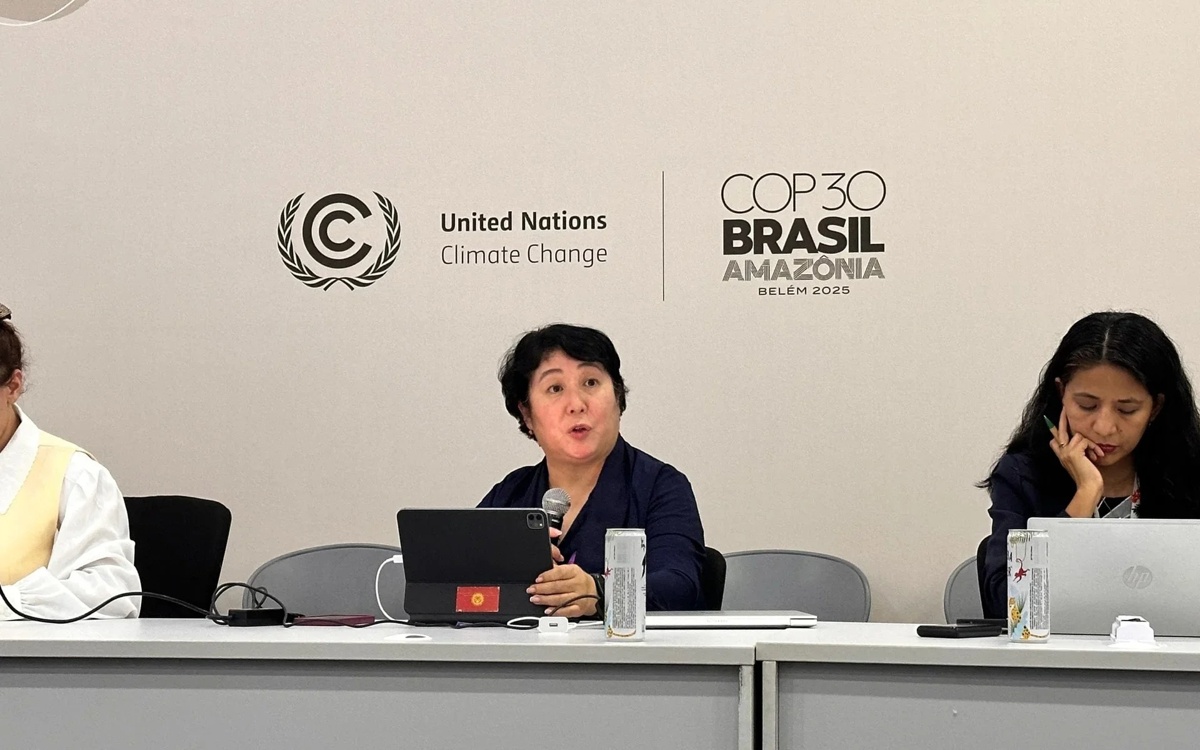Colorado’s soil health program takes a hit as the federal government pulls millions in funding from the Climate Smart Commodities grant – AspenTimes.com

Report on the Termination of Federal Funding for Colorado’s Soil Health Program and its Impact on Sustainable Development
Executive Summary
In April, a 2022 federal grant of $25 million awarded to the Colorado Department of Agriculture’s soil health program was rescinded due to changes in federal policy. This program was instrumental in promoting agricultural practices aligned with multiple United Nations Sustainable Development Goals (SDGs). The termination of this funding severely curtails the state’s ability to support farmers and ranchers in adopting sustainable methods, thereby jeopardizing progress toward critical environmental and economic objectives. The loss of funding has led to significant operational disruptions, including the termination of subcontractor positions and a reduction in technical assistance, undermining partnerships crucial for achieving the SDGs.
Analysis of Impacts on Sustainable Development Goals (SDGs)
The funding withdrawal directly impacts Colorado’s progress on several key SDGs:
- SDG 2: Zero Hunger: The program aimed to improve soil quality to increase agricultural production and enhance the nutrient density of crops. The funding loss slows the widespread adoption of these practices, which are vital for ensuring sustainable food production systems and improving food security.
- SDG 13: Climate Action: Originally funded through the Partnerships for Climate Smart Commodities grant, the program was a primary mechanism for promoting climate change adaptation. It helped agricultural producers build resilience to a drier climate and unstable markets. The cuts hinder producer-led climate action and slow the adoption of practices that contribute to carbon sequestration in soil.
- SDG 15: Life on Land: Healthy soil is fundamental to sustainable land management and biodiversity. The program encouraged practices that provide ecosystem services, including positive effects on wildlife and air quality. The setback impedes efforts to combat land degradation and protect terrestrial ecosystems.
- SDG 6: Clean Water and Sanitation: Enhanced soil health improves water efficiency and quality by reducing agricultural runoff. The reduction in program activities negatively affects the potential for broad improvements in water resource management within the agricultural sector.
- SDG 8: Decent Work and Economic Growth: The funding cuts had immediate economic consequences, causing subcontractors to eliminate positions. Furthermore, the program’s goal of helping farmers reduce operational inputs and increase profitability is now constrained, affecting the economic resilience and growth of rural communities.
- SDG 17: Partnerships for the Goals: The initiative was built on a partnership between the federal government, the state of Colorado, intermountain state universities, and local conservation districts. The withdrawal of federal support represents a breakdown in this multi-stakeholder collaboration, which is essential for implementing the SDGs.
Financial and Operational Consequences
The Colorado Department of Agriculture (CDA) had expended approximately $8 million of the $25 million award before the funding was terminated. The primary consequences of this decision include:
- The most severe impact was on the nearly 50 subcontractors, primarily conservation districts, who were forced to cut positions.
- The CDA’s capacity to provide direct technical assistance and guidance to producers for implementing soil health practices has been significantly reduced.
- The ability to provide incentive payments to ranchers for adopting new, sustainable practices is diminished.
- According to the CDA, the decision has resulted in broken trust between the department and its partners, including producers who were relying on the funding.
Future Outlook and Alternative Funding
The CDA is seeking to mitigate the funding gap to continue its work. The program is currently supported by limited alternative sources, which are insufficient to replace the scale of the federal grant.
- An appropriation of $300,000 from the state’s general fund.
- Three one-time grant awards totaling approximately $1.3 million.
- Ongoing state funding of around $3 million through the Agriculture Stewardship Tax Credit program.
Despite these funds, the CDA reports that the loss of the federal grant is a “major blow” that will slow the understanding and widespread adoption of soil health practices. The department will continue to seek long-term funding sources to support the program, recognizing its critical role in advancing agricultural resilience and achieving sustainability objectives beneficial to all state residents.
SDGs Addressed in the Article
- SDG 2: Zero Hunger – The article discusses efforts to increase agricultural production, improve crop nutrient density, and enhance the profitability and resilience of farmers and ranchers.
- SDG 6: Clean Water and Sanitation – The soil health program aims to improve water efficiency and positively impact water quality.
- SDG 13: Climate Action – The program is explicitly linked to climate through the “Partnerships for Climate Smart Commodities” grant and its goal to help producers adapt to a “drier future” and an “uncertain climate.”
- SDG 15: Life on Land – The core focus of the article is a “soil health program” designed to improve soil quality, which is central to combating land degradation and protecting terrestrial ecosystems.
- SDG 17: Partnerships for the Goals – The article details a multi-stakeholder partnership involving federal, state, academic, and local entities, and highlights the negative impact of the funding withdrawal on this collaboration.
Specific SDG Targets Identified
-
SDG 2: Zero Hunger
- Target 2.3: By 2030, double the agricultural productivity and incomes of small-scale food producers. The article supports this by stating the program’s goals are to “increase production” and help producers “be more profitable.”
- Target 2.4: By 2030, ensure sustainable food production systems and implement resilient agricultural practices. The article highlights the program’s focus on “producer-led soil health practices” that “build resilience that will help them weather an uncertain climate and unstable markets.”
-
SDG 6: Clean Water and Sanitation
- Target 6.4: By 2030, substantially increase water-use efficiency across all sectors. The article mentions that one of the benefits of the soil health practices is to “improve water efficiency.”
- Target 6.6: By 2020, protect and restore water-related ecosystems. The article notes that the practices provide “ecosystem services,” including “far-reaching positive effects on… water quality.”
-
SDG 13: Climate Action
- Target 13.1: Strengthen resilience and adaptive capacity to climate-related hazards and natural disasters in all countries. The program is designed to “help ag producers adapt to and be more profitable in a drier future” and “weather an uncertain climate.”
-
SDG 15: Life on Land
- Target 15.3: By 2030, combat desertification, restore degraded land and soil. The entire initiative is a “soil health program” created to “help producers overcome the barriers to adopting practices that could improve soil quality.”
-
SDG 17: Partnerships for the Goals
- Target 17.17: Encourage and promote effective public, public-private and civil society partnerships. The article describes a partnership between the U.S. Department of Agriculture (public), the Colorado Department of Agriculture (public), state universities (public/academic), and subcontractors like conservation districts (civil society). The breakdown of this partnership is a central theme, as the funding cuts “led to broken trust between (the Colorado Department of Agriculture) and its partners.”
Indicators for Measuring Progress
-
Indicators for SDG 2 (Targets 2.3 & 2.4)
- Adoption of sustainable practices: The article implies this can be measured by the number of producers who adopt the innovative soil health practices. The loss of funding is expected to “slow their widespread adoption.”
- Profitability of producers: The program aims to make producers “more profitable,” implying that an increase in income or profit margins for participating farmers and ranchers is a key metric.
-
Indicators for SDG 15 (Target 15.3)
- Adoption of soil health practices: The article directly states that the funding loss “will slow their widespread adoption,” indicating that the rate and scale of adoption is a primary indicator of progress.
- Technical assistance provision: The number of staff available to “provide technical assistance directly to producers” is mentioned as a critical component that has been directly impacted by funding cuts, serving as an indicator of program capacity.
-
Indicators for SDG 17 (Target 17.17)
- Financial resources mobilized: The article explicitly mentions the amount of funding awarded (“$25 million”), spent (“approximately $8 million”), and sought from other sources (“$300,000 appropriation,” “$1.3 million” in grants, “$3 million” tax credit program).
- Number of partners: The article states the agency had “just under 50 subcontractors,” which serves as a direct indicator of the scale of the partnership.
- Human resources contributed: The article mentions the impact on staff positions, noting that subawardees “had to cut positions” and the state agency’s ability to provide staff for technical assistance was reduced. This serves as an indicator of the human resource investment in the partnership.
Summary of SDGs, Targets, and Indicators
| SDGs | Targets | Indicators |
|---|---|---|
| SDG 2: Zero Hunger | 2.4: Ensure sustainable food production systems and implement resilient agricultural practices. |
|
| SDG 6: Clean Water and Sanitation | 6.4: Substantially increase water-use efficiency. |
|
| SDG 13: Climate Action | 13.1: Strengthen resilience and adaptive capacity to climate-related hazards. |
|
| SDG 15: Life on Land | 15.3: Combat desertification, restore degraded land and soil. |
|
| SDG 17: Partnerships for the Goals | 17.17: Encourage and promote effective public, public-private and civil society partnerships. |
|
Source: aspentimes.com

What is Your Reaction?
 Like
0
Like
0
 Dislike
0
Dislike
0
 Love
0
Love
0
 Funny
0
Funny
0
 Angry
0
Angry
0
 Sad
0
Sad
0
 Wow
0
Wow
0












































































